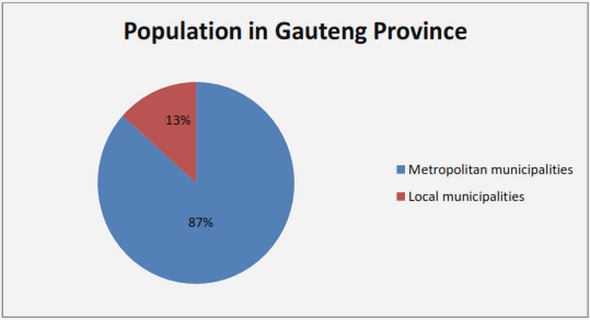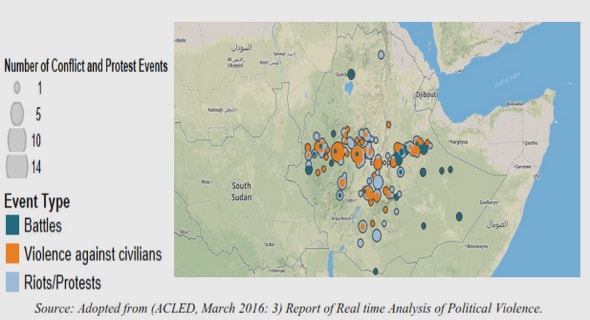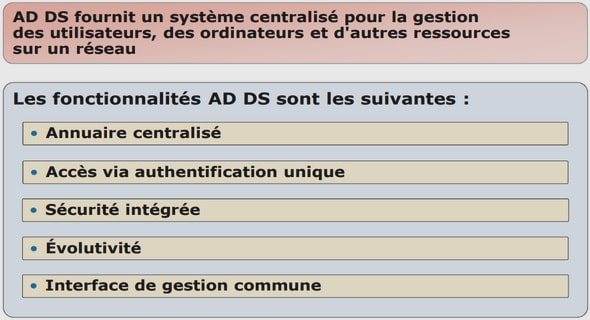Get Complete Project Material File(s) Now! »
Economic and social context
Uganda is one of the poorest countries in the world, but over the last decade and a half, it has registered positive economic growth. The United Nations Development Programmes (UNDP) in its human development index ranks Uganda in the low human development category.13 Notably, progress has been achieved in the area of poverty reduction. In 1996, core poverty was estimated at 56%.14 This fell in 1998 to 44% and further dropped to 35% in 2001. It is reported to have dropped to 31% in 2006.15 The life expectancy is 54.1 years, the Gross Domestic Product (GDP) per capita is USD 1,254 and gross enrollment in education 62.3%.16 The country is divided into about 117 districts that vary in size and population. It is therefore hardly surprising that Uganda is the recipient of development assistance as it is a poor underdeveloped country.
Despite the fact that Uganda has managed to record real gross domestic product (GDP) growth in recent years, the economy remains highly exposed and vulnerable. As part of its medium term economic strategy, the government is in the process of creating a suitable environment for increased private investment and savings. The adopted strategy is underpinned by the idea that
strong economic growth is necessary to eradicate poverty, which will only be possible with high levels of private investment and a strong export base. It could therefore be concluded that the economic policies of the government have largely succeeded in reversing the macroeconomic disequilibria that the economy suffered for most of the period between the early 1970s and the early
1980s.17 However, it has to be acknowledged that such investment is unlikely to occur where there is no observance and protection of human rights. It is worthwhile to note that the government had in place a Poverty Eradication Action Plan (PEAP) which was supported by five pillars that underpin the medium term economic and budget strategy.18 Pillar four thereof was devoted to ‗ensuring good governance‘.19 As already alluded to herein, the concept of good governance embraces the promotion, respect and protection of human rights. The PEAP has now been replaced by the National Development Plan (NDP).20 Later, in chapters 3 and 4, the NDP and how it relates to
development and human rights shall be examined.
Development
In trying to understand what development is, one will immediately be thrust into an inter-disciplinary turf battle. This battle has been one mainly between economists and development practitioners, with the international human rights scholars joining the fray in the last two decades. Lofchie acknowledges that, ‗the notion of development has become so diffuse that it must be redefined afresh by each scholar who wishes to use it.‘109 Classical or traditional economists tend to gravitate towards a definition of development which places a lot of currency on the measurement of a country‘s Gross Domestic Product (GDP) as well as Gross National Product (GNP). GDP is the total final output of goods and services produced by a country‘s economy, within the country‘s territory by residents and non-residents, regardless of its allocation between domestic and foreign claims.110 GNP is the total domestic and foreign output claimed by residents of a country. It comprises gross domestic product plus factor incomes accruing to residents from abroad, less the income earned in the domestic economy, accruing to persons abroad.111
Todaro, for example, asserts that in strictly economic terms, development has traditionally meant the capacity of a national economy whose initial economic condition has been more or less static for a long time to generate and sustain an annual increase in its GNP at rates of perhaps 5% to 7% or more.112 Classical economists will therefore assess whether a country is developing, depending on whether there is an increase in the amount of goods and services produced by an economy of a particular country.113 This kind of definition of development, as Hansungule notes, did not bother to
counter check the net effect of such an increase of the GDP on, for instance, the life of an ordinary person.114 In addition the GDP/GNP approach does not take into the account the question of who owns and produces these goods and services. It does not ask about the income inequality question. It is therefore possible that a country may register impressive GDP figures yet the reality on the ground indicates that the development is enjoyed by the few, while the majority wallow in chronic poverty.
CHAPTER 1 INTRODUCTION
1.1 BACKGROUND
1.2. DEVELOPMENT PARTNER INTERVENTIONS
1.3. THE RESEARCH QUESTION
1.4. OBJECTIVES AND RELEVANCE OF THE STUDY
1.5. LITERATURE REVIEW
1.6 METHODOLOGY
1.7. SCOPE OF THE STUDY
1.8. CHAPTER OVERVIEW
1.9. LIMITATIONS OF THE STUDY
1.10. CONCLUSION
CHAPTER 2 CONCEPTS OF DEVELOPMENT ASSISTANCE AND HUMAN RIGHTS
2.1. INTRODUCTION
2.2. HUMAN RIGHTS
2.3. DEVELOPMENT
2.4. LAW OF DEVELOPMENT
2.5. AFRICA AND THE LAW OF DEVELOPMENT
2.6. INTERNATIONAL LAW OF DEVELOPMENT
2.7. THE RIGHT TO DEVELOPMENT
2.8. DEVELOPMENT ASSISTANCE
2.9. DEVELOPMENT ASSISTANCE REDEFINED
2.10. DEVELOPMENT ASSISTANCE A RIGHT OR CHARITY?
2.11. INTERNATIONAL CUSTOMARY LAW AND DEVELOPMENT ASSISTANCE
2.12. DEVELOPMENT PARTNERS/DONORS
2.13. HUMAN RIGHTS-BASED APPROACH TO DEVELOPMENT COOPERATION
2.14. PARTNERSHIP
2.15. OWNERSHIP
2.16. CONCLUSION
CHAPTER 3 LEGAL AND POLICY FRAMEWORK GOVERNING DEVELOPMENT IN UGANDA 3.1. INTRODUCTION
3.2. LEGAL AND POLICY FRAMEWORK GOVERNING DEVELOPMENT IN UGANDA 111 3.2.1. THE CONSTITUTION OF UGANDA 1995
3.3. THE RIGHT TO DEVELOPMENT IN UGANDA
3.4. CONTENT AND CLAIMANTS OF THE RIGHT TO DEVELOPMENT IN UGANDA
3.5. CONCLUSION
CHAPTER 4 THE HUMAN RIGHTS LANDSCAPE IN UGANDA
4.1. INTRODUCTION
4.2. THE HUMAN RIGHTS LEGAL AND POLICY FRAMEWORK
4.3. INSTITUTIONAL OVERVIEW
4.4. CONCLUSION
CHAPTER 5 DEVELOPMENT ASSISTANCE AND THE HUMAN RIGHTS AGENDA
5.1 INTRODUCTION
5.2. WHY PROVIDE DEVELOPMENT ASSISTANCE?
5.3. DEVELOPMENT PARTNERS SUPPORTING HUMAN RIGHTS PROGRAMMES
5.4. DEVELOPMENT ASSISTANCE TREATIES
5.5. FOREIGN POLICY/ DEVELOPMENT COOPERATION POLICIES OF THE DEVELOPMENT PARTNERS
5.6. AGENCIES SUPPORTED BY THE DEVELOPMENT PARTNERS
5.7. THE PRACTICE
5.8. ASSISTANCE MODALITIES
5.9. RELATIONSHIP/ WORKING MODUS
5.10. SOUTH- SOUTH ASSISTANCE-TOWARDS AFRICAN DEVELOPMENT ASSISTANCE
5.11. CONCLUSION
CHAPTER 6 FINDINGS AND RECOMMENDATIONS
6.1. INTRODUCTION
6.2. FINDINGS
6.3. RECOMMENDATIONS
6.4. CONCLUSION


